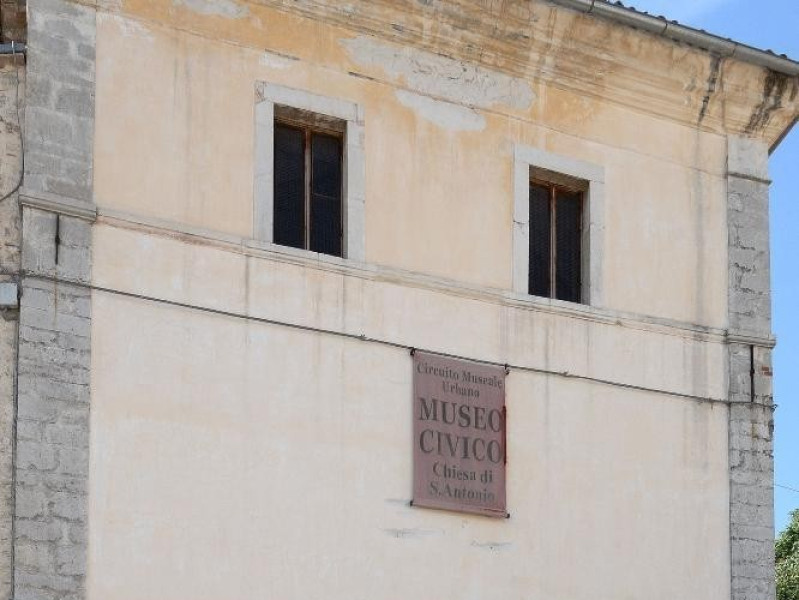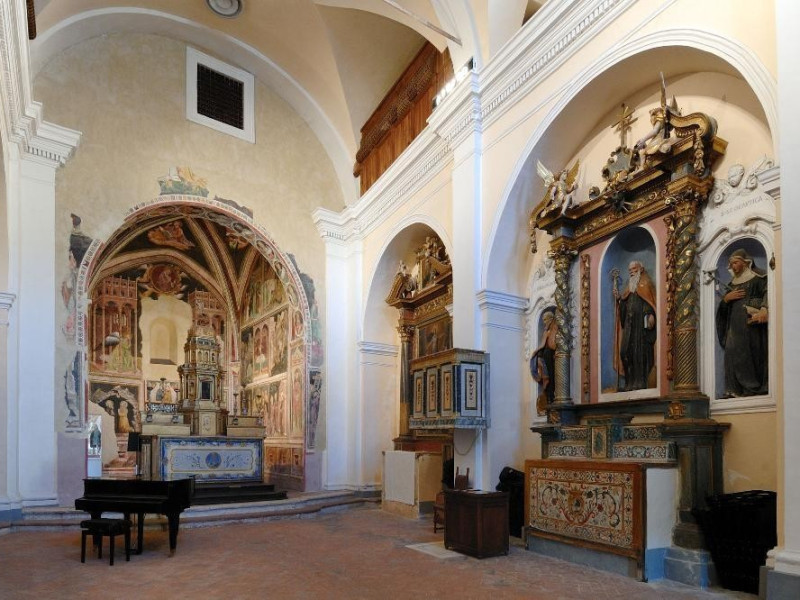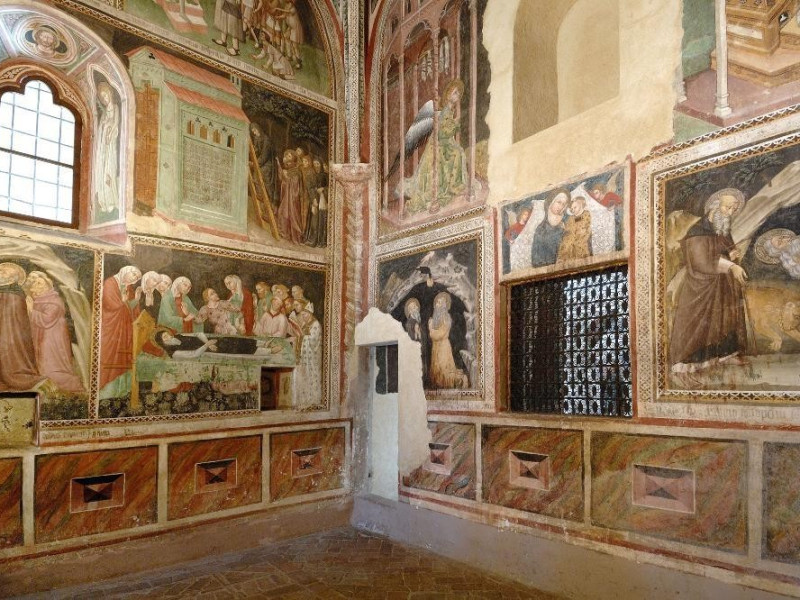Luogo - Museum
Chiesa-museo di Sant'Antonio Abate
Where
Via Porta Leonina, Cascia (Perugia)
The Church-Museum of Sant’Antonio Abate
The Chiesa-Museo di Sant’Antonio Abate is located in the center of Cascia, just outside the town walls, right after the Porta Orientale entrance.
Once, the Church of Sant’Antonio was part of the Benedictine complex of ancient origins, re-built around the end of the 14th century. Moreover, after the ruinous earthquake in 1703, the church underwent a radical change, an intervention that altered its structure, but fortunately spared both the apse and the nun’s choir at its back. Today the deconsecrated church has been transformed into a museum.
The presbytery and the choir of the nuns, unchanged over time, notwithstanding numerous hands of painting, preserve two interesting cycles of frescoes. The first, the one in the presbytery, depicts Episodes of the life of St Anthony Abbott, to whom the church is dedicated, and is the work of an anonymous painter, the Master of the Dormitio of Terni, a very interesting Umbrian artist active between the end of the 14th and the beginning of the 15th century. The second, the one with the Stories of the Passion of Christ, was executed in 1461 by Nicola da Siena and is one of the works that testifies most clearly to the author’s late Gothic narrative taste.
The Cascia Museum Circuit was inaugurated in 1997, and is organized in two main sites: Palazzo Santi and the Church of Sant’Antonio Abate. The latter was the property of the Benedictine friars and was part of an ancient complex.
The monumental wooden sculpture group of Tobiolo and the Angel executed in the second half of the 15th century is inside the church. For its undisputable preciousness, the group has become the symbol of the entire museum circuit. Originally, the work was inside the town Church of Sant’Agostino, where it decorated the altar dedicated to the Archangel Raphael.
Recent studies have attributed the work to Domenico Indivini, already known as the engraver of the choir of the Basilica Superiore di San Francesco in Assisi.
Apart from the group of Tobiolo and the Angel, the Baroque altars, which decorate the walls of the church, are also interesting. They were added during the radical intervention made in the 17th century. On the main altar there is a gilded and carved wooden tabernacle in the shape of a small Three Order Temple.
Behind the façade, a precious organ—from the 17th century—is placed.




